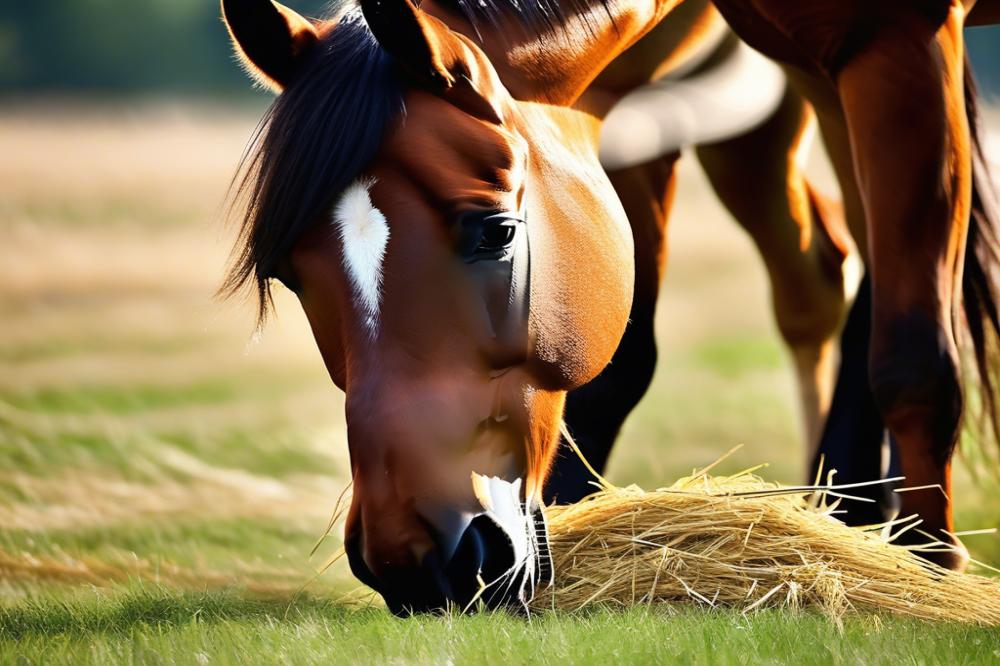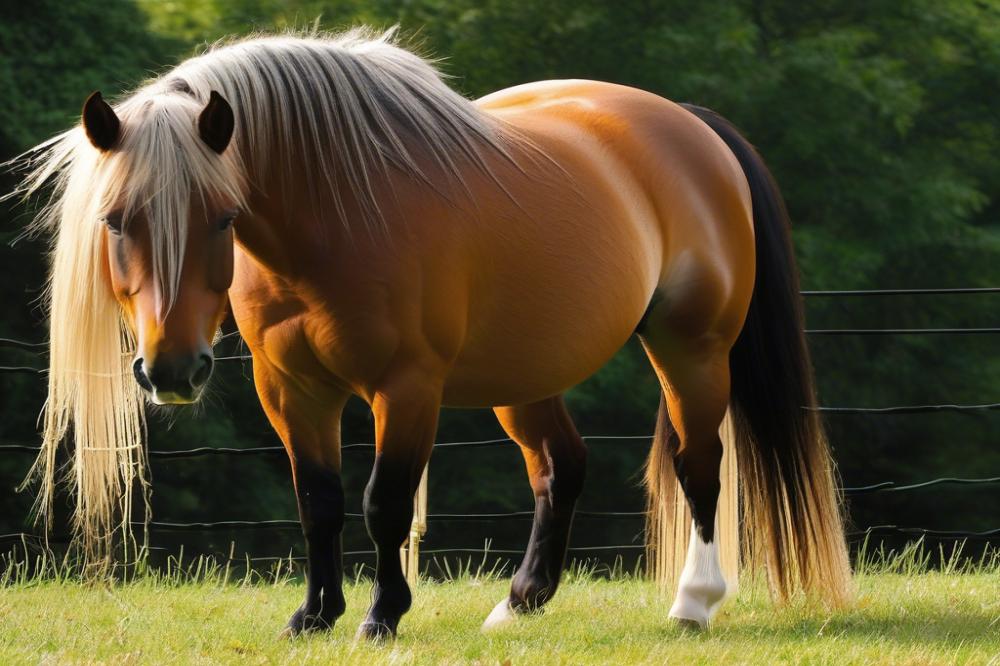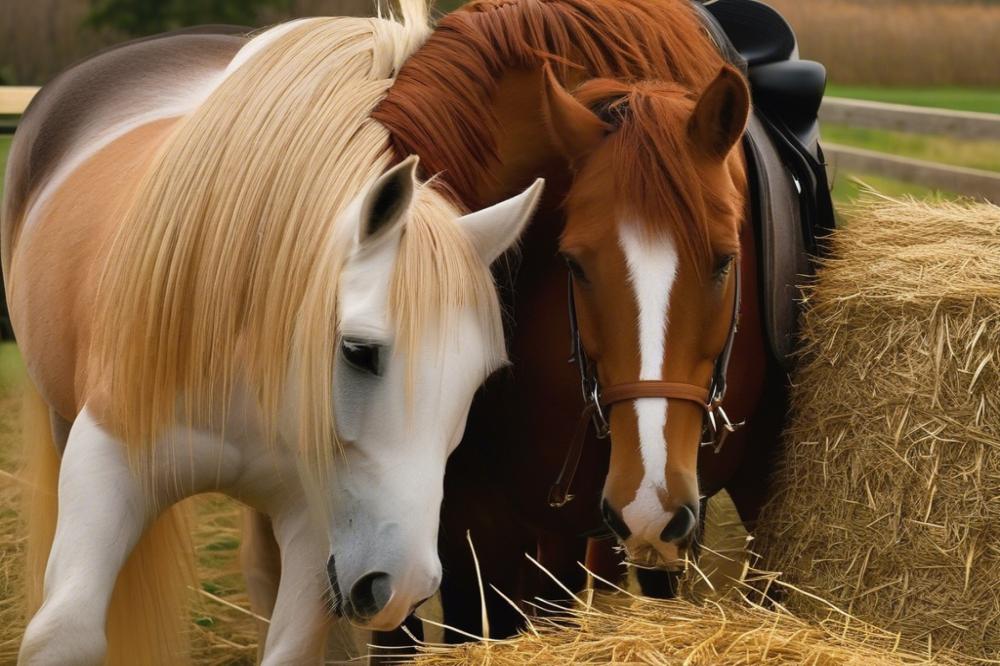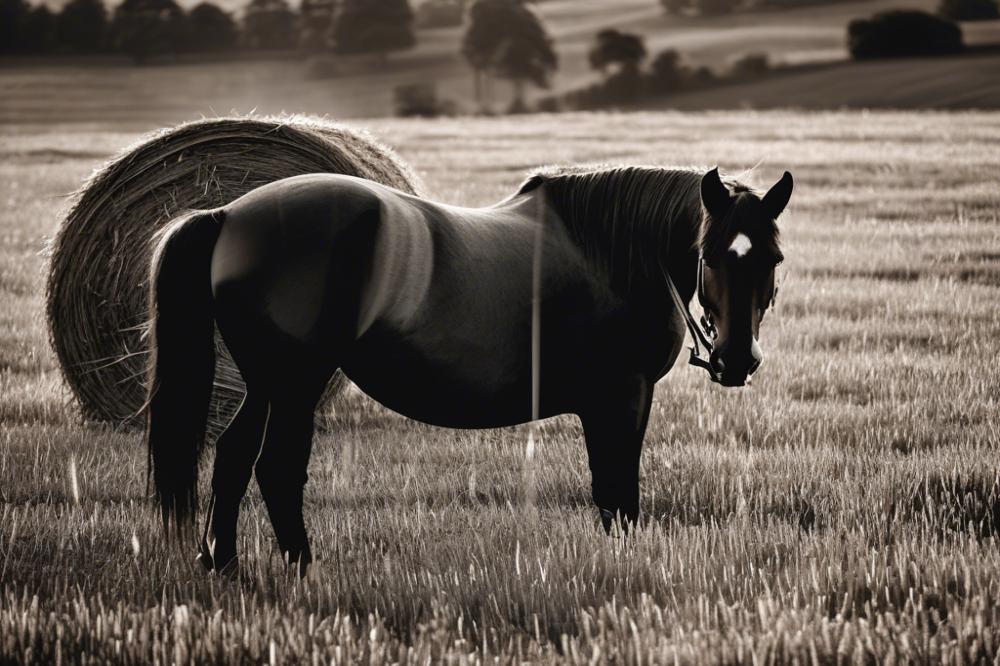The Essentials of Hay for Horses
When it comes to keeping our equine friends healthy and happy, hay takes center stage in their diets. It’s like the bread and butter of horse feeding. Many horse owners already know that the quality of hay can greatly influence a horse’s overall well-being. Choosing the right type of hay is crucial for maintaining optimal equine nutrition. Not all hay is created equal, and sometimes what may seem like a minor detail can ripple through all aspects of horse care.
The Significance of Quality Hay
A horse’s diet primarily consists of forage, making hay a staple in their feeding routine. Good-quality hay provides essential nutrients, supporting horse health and helping them thrive. Just like we need nutritious meals to fuel our busy lives, horses need their share of proper nutrients to remain energetic and fit. So, what happens when hay gets rained on? Well, that’s where things can get a tad complicated.
Unpacking Rained-On Hay

Picture a lovely sunny day turning into a sudden downpour. Now, imagine your stack of fresh hay getting soaked. Many horse owners freak out at the idea of rained-on hay, fearing the worst. What does rain actually do to our hay? Spoilage and mold are common concerns, but not every rainy situation is a disaster. With a bit of understanding, horse owners can navigate these hurdles and make informed decisions. Rained-on hay might still be usable for some horses, but it’s essential to check the quality carefully.
While the branding of horses meaning could suggest prestige and a perfect image, let’s focus on reality. Imagine your horse glancing at their feed and giving you the side-eye. They’re picky eaters sometimes! If the hay doesn’t smell fresh or looks moldy, it’s likely they won’t touch it. On the flip side, if the hay is just slightly wet but still smells okay, it might not be as bad as you think.
Evaluating the Situation
Just like a rainy day might not ruin your plans if you’re prepared, proper evaluation can lead to smart decisions about rained-on hay. Look at its color, feel the texture, and take a whiff. Is this hay still your pal, or has it turned into a soggy mess? Good hay quality means it should be leafy and vibrant, not drab and musty. Keeping your horse life equipment in mind, proper storage can make a world of difference. Protecting hay from the elements helps maintain its nutritional value and prevents issues down the road.
In conclusion, ensuring our horses receive the best starts with understanding the ins and outs of hay. Rained-on hay isn’t necessarily a lost cause, but assessing its quality is key. Just remember: a happy horse leads to a happy horse owner. Equip yourself with knowledge, and you’ll both live your best equine life!
Understanding Hay

Types of Hay Commonly Used for Horses
Horses enjoy several types of hay, each with unique benefits. Timothy, alfalfa, and orchard grass are popular choices. Timothy hay is often admired for its balance of fiber and protein. Alfalfa, on the other hand, is rich in protein and can fuel your horse’s energy, making it great for performance horses. Orchard grass tends to be sweeter and softer, making it a favorite for picky eaters. The type of hay you choose can greatly influence your horse’s diet.
Nutritional Value of Hay
Hay serves as a major part of a horse’s diet. Its nutritional value is crucial for equine health. A high-quality hay can provide essential nutrients, including fiber, vitamins, and minerals. Without these nutrients, a horse could face health issues down the line. It’s like trying to build a house without a solid foundation; eventually, something has to give. When you select hay, it’s essential to consider its freshness too. If it smells musty or looks brown, it likely won’t offer the best for your horse feeding routine.
How Hay is Harvested and Stored
Harvesting hay requires careful timing and technique. Farmers cut the grass at the right moment, usually when the plants are at their peak nutritional value. After cutting, the hay needs to dry for a few days. This drying process can be tricky. Rain can ruin a whole batch, leading to rained-on hay for horses, which is not ideal. Once dry, the hay is baled and stored to keep it safe from weather elements and pests. Proper storage is crucial, as hay can mold if not stored correctly. Keeping it covered and in a dry place helps maintain its quality. Making sure the hay is fresh and clean will support your horse’s well-being.
What Happens When Hay Gets Rained On

Effects of Moisture on Hay Quality
When hay gets wet, everything changes. First, the moisture leads to a shift in texture. It goes from being nice and dry to a mushy mess. This might seem harmless, but it can be a dealbreaker for horses. Hay quality drops significantly. That’s because wet hay can begin to mold, which means it becomes unfit for a horse’s diet. Moldy hay can lead to respiratory issues, and nobody wants that for their beloved equine friend.
Nutritional Changes Due to Rain Exposure
Aside from mold, rain can wash away some of the important nutrients in hay. Key vitamins and minerals can leach out with the water. Losing those nutrients impacts equine nutrition. Horses need a balanced diet, and when the hay quality drops, it can throw everything off. Think about it like this: if you’ve ever had a soggy sandwich, you know it loses its appeal. The same happens with hay. Horses might refuse it altogether, leaving them hungry. That’s a terrible situation for any horse owner.
Potential Contaminants Introduced by Rain
Another concern is contamination. Rain can introduce all sorts of unwanted guests into the hay. Think of the puddles that form on the ground after a storm. Those puddles can carry dirt, bacteria, or even chemicals from the environment. If this water seeps into the hay, it creates more risks for horse health. It’s similar to eating food that has fallen on a dirty floor. Not appealing, huh? Proper horse care includes keeping that feed clean and safe.
If rained-on hay is unavoidable, it’s smart to test it before feeding it to your horse. Some owners may think, “It’s just a little rain,” but always remember: health comes first! Additionally, always look for signs of spoilage. Noticing the difference can save you headaches down the line. Remaining vigilant is key to keeping your equine companion happy and healthy.
Evaluating Rained-On Hay
Signs of Good versus Damaged Hay
When it comes to hay, appearance often speaks volumes. Good hay should have vibrant colors. Bright green indicates freshness, while yellow could mean aging. If you see brown or black patches, that’s often a red flag. These dark spots might hint at mold or decay, which spells trouble for your horse’s diet. Smelling the hay can be telling too; fresh hay should have a sweet aroma. If it smells musty or sour, steer clear.
Another thing to check is the texture. Hay that feels dry and crumbly is generally better than hay that feels soggy. You want to avoid any clumps that stick together; they could be hiding some unsavory surprises. Remember, taking a close look is crucial in horse feeding.
Testing for Mold and Toxins
So, you’ve got some rained-on hay? Don’t panic just yet, but be smart about it. Checking for mold should be your first step. Mold can lead to various health issues in horses. Look closely for any visible signs of fuzz or discoloration. If you’re unsure, you could always conduct a simple test. Grab a handful and feel it. If it feels damp or unusually heavy, toss it aside.
For toxins, the story can be even trickier. Some toxins may not be visible but can still be harmful. It’s a good idea to consider sending a sample to a lab for testing, especially if you suspect potential issues. Keeping your horse healthy relies on knowing what they’re consuming.
Assessing Nutritional Value after Rain Exposure
Now, let’s talk about the nutritional aspect of rained-on hay. Rain can wash away some nutrients, especially vitamins. While grass hay usually has higher protein content, the rain may dilute this quality. Horses thrive on good equine nutrition, so knowing what’s left in that hay is vital.
Check for any signs of nutrient loss. If it looks weak or hollow, that might not be best for your horse’s health. If you’re unsure, consider having it tested for nutritional value. You want to maintain their diet’s integrity, after all! A horse that’s not getting enough nutrition can show signs of fatigue or lackluster performance.
Remember, proper horse care also means being mindful of what you feed them. Rained-on hay can sometimes be salvaged with careful evaluation. Just keep a sharp eye out and stay proactive in ensuring the best for your equine friend.
Health Risks Associated with Rained-On Hay
A lot can happen when hay gets drenched in a rainstorm. Horses are picky eaters, and their health can take a hit if their food is not up to snuff. Consuming rained-on hay can lead to some serious problems in their diet. Mold and fungi love damp hay, which means feeding your horse this stuff is like offering a buffet of bad news. Yeast and mycotoxins may also thrive in that soggy mess. You definitely don’t want your beloved equine friend to feel sick because of poor-quality hay.
Possible Health Issues for Horses
When horses munch on moldy hay, they might develop respiratory issues. Coughing and wheezing can be common signs. Other problems include colic or even diarrhea. It’s like a surprise package of health risks waiting to unfold. Poor-quality hay can also affect their energy levels, making your horse feel sluggish and less playful. Nobody wants a grumpy horse! Malnutrition can sneak in too. If the hay lacks essential nutrients, your horse may not get what it needs for good equine nutrition.
Identifying Symptoms of Poor-Quality Hay Consumption
So how can you tell if your horse is having a tough time after munching on that bad hay? Watch for changes in behavior. If your horse suddenly refuses to eat, it’s time to take a closer look. Lethargy or signs of discomfort like a bloated stomach can indicate trouble. Looking for physical symptoms is just as crucial. If the coat starts to look dull or there’s unexpected weight loss, it’s a warning sign. A close eye on your horse allows for quick action when things go sideways.
Preventative Measures for Horse Owners
Horse owners should prioritize hay quality. Always check if your hay smells fresh and looks bright. Storing hay properly can make a huge difference too. Keep it dry and away from moisture! When feeding your horse, consider mixing the hay with some high-quality forage. Variety is the spice of life, even for a horse diet! Test your hay regularly for mold and nutritional value. Being proactive in horse care is key to happy, healthy horses. Remember, when it comes to your equine friend, it’s better to be safe than sorry!
Alternatives to Rained-On Hay
Options for Hay Storage and Protection
Storing hay properly can keep it in good shape. Keeping your hay off the ground is a good start. Use pallets or tarps to create a barrier from moisture. This can help maintain hay quality. Waterproof covers can also be beneficial. Make sure they fit snugly to prevent any leaks. A well-ventilated shed or barn can be a great choice, too. Good airflow helps to keep mold at bay. Remember, prevention is easier than fixing problems later.
Alternative Forage Options for Horses
When hay is not an option, look for alternative forages. Grass, alfalfa, or even beet pulp can be part of a horse diet. Each of these options has different nutritional values. Horses love fresh pasture when it’s available. It may be high in moisture, so introduce it slowly to avoid upset tummies. If hay quality is poor, consider various grain mixes specially made for equine nutrition. They can provide essential vitamins and minerals. Just like humans, horses can get bored with their food. Keep it interesting with a mix of goodies!
Best Practices in Hay Management
Managing hay effectively is key to a healthy horse. Regularly check your stock for mold or spoilage. It’s smart to rotate the hay, using older bales first. Store it in a clean area to keep pests away. Keeping hay dry is a crucial part of horse feeding. Wet hay can lead to respiratory issues for your horse, and nobody wants that! If you’re unsure about a bale, trust your instincts—better safe than sorry. Remember to always have fresh water nearby. Hydration plays a huge role in horse health, and it complements their diet wonderfully. Using these tips can help you provide the best care for your beloved equine friend.
Expert Opinions and Guidelines
Veterinarian Insights on Rained-On Hay
Veterinarians often have mixed feelings about hay that has been rained on. Some say it can still be safe if it’s not too soggy. If the hay gets soaked through, mold can start. Mold is bad for horses and can lead to health problems.
Dr. Jones, a well-known equine vet, explains that moisture can wash away nutrients. “When hay gets soaked, it loses vitamins,” she says. Hay quality matters a lot in a horse’s diet. If you wouldn’t eat it, why give it to your horse?
Recommendations from Equine Nutritionists
Equine nutritionists focus on how important it is to maintain a good horse feeding routine. They recommend inspecting the hay closely. Look for signs of mold or discoloration. Freshness is key, especially after it has been rained on.
Some nutritionists suggest drying the hay as quickly as possible. “A little rain isn’t the end of the world,” notes a well-respected expert. Just make sure to check for those troublesome spores before deciding to feed it.
Case Studies of Horses Fed Rained-On Hay
While we’ll skip specific stories, many horse owners have stories about trying rained-on hay. One owner mentioned their horses wouldn’t touch it after a few rainy days. This tale shows that every horse has its preferences. Some might gobble it up, while others turn their noses up.
Another barn had a different experience. They noticed that, when properly dried, the horses were fine with the hay after the rain. Proper care can make all the difference in keeping your horse healthy.
Final Thoughts on Rained-On Hay and Horse Health
Let’s wrap things up with a quick recap about that rained-on hay situation. It’s clear that not all hay is created equal, especially when the weather takes an unexpected turn. While some moisture can rejuvenate the nutritional content of hay, excessive rain presents real challenges. Mold and deterioration can sneak in, turning what was once a nutrient-rich meal into a health hazard for your horse. Remember, a horse’s diet should be like a balanced meal, not a game of guess the mystery meat!
When it comes to the well-being of our equine friends, it’s crucial to be smart about what they eat. After all, a horse that eats poor-quality forage might as well be munching on cardboard! Horses require a diet that supports their energy levels and overall health, much like we need our vitamins and minerals. Keeping hay dry and safe is practically a full-time job. If only there was a horse GPS tracker for hay bales, we’d be golden!
Managing forage is all about being attentive and informed. It never hurts to inspect hay for signs of damage or spoilage before loading it into the feeder. Like a wise old farmer would say, “A stitch in time saves nine.” So, take the time to double-check. Your horse will thank you for it! And as we ponder the age-old question of donkey vs horse strength, it’s clear that strong relationships—between horse owners and their hay—are just as vital. So, let’s be diligent and ensure our four-legged companions are getting the best possible care.
In the grand scheme of caring for horses, let’s all strive to keep our hay well-ventilated, clean, and dry. By being observant, we can make thoughtful choices that support our horses’ health and vitality. Always remember, their happiness is tied directly to what goes into their bellies. Give your horse the nutrition they deserve, and you’ll have a partner who’s ready to hit the trails and enjoy life by your side!



